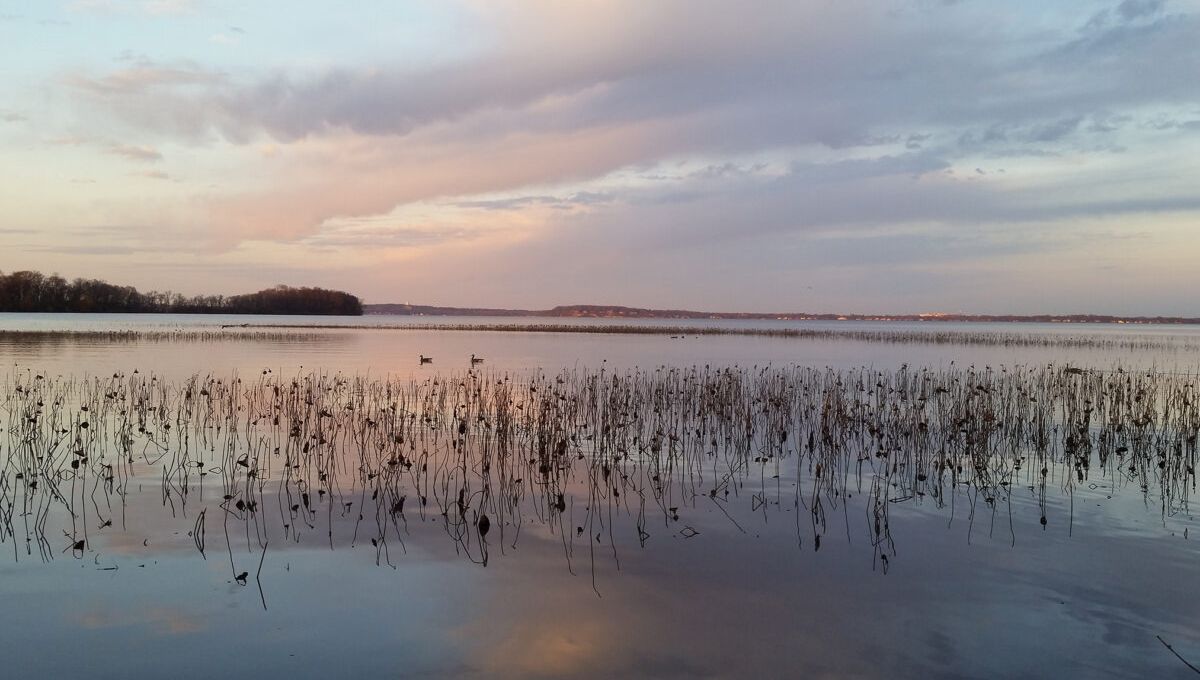
Once again, we’re here to tell you that evolution is not always linear. In Wisconsin’s Lake Mendota, for example, bacteria evolve in a kind of endless loop – think Groundhog Day if it were set underwater and on the microscopic scale.
ADVERTISEMENT GO AD FREE
A new study, led by researchers from the University of Texas at Austin, discovered that bacterial species within the lake evolve rapidly over the course of a year, seemingly in response to the changing seasons that completely transform their environment.
In the winter, Lake Mendota is covered in ice, but when this thaws in summer, it’s engulfed by algae. These cyclical shifts take their toll on the lake’s bacteria. Strains that are better suited to the frigid, icy waters will thrive in winter, and in summer, those adapted to warmer conditions will have their day in the Sun.
The team analyzed 471 microbe samples collected across 20 years, looking at genetic variations within and between species over that time. They assembled a total of 2,855 bacterial genomes, finding that genetic variation was “common and frequent”, with cyclical seasonal patterns observed in 80 percent of them.
As you might expect, gene variants fluctuated over generations, but, much more surprisingly, hundreds of species appeared to almost evolve backward, returning to a genetic state practically identical to one they had occupied thousands of generations prior. It’s worth noting that microbes live for just a few days, so you can analyze thousands of generations of evolution in just a year.
The same variation, the team found, played out year after year, as if stuck on loop.
“I was surprised that such a large portion of the bacterial community was undergoing this type of change,” said Robin Rohwer, a postdoctoral researcher at The University of Texas at Austin in the lab of co-author Brett Baker, in a statement. “I was hoping to observe just a couple of cool examples, but there were literally hundreds.”
ADVERTISEMENT GO AD FREE
It seems, the researchers conclude, that ecology and evolution go hand in hand, and understanding this could be hugely beneficial in the study of microbes and beyond.
“This study is a total game changer in our understanding of how microbial communities change over time,” Baker added. “This is just the beginning of what these data will tell us about microbial ecology and evolution in nature.”
The strange evolutionary cycle was especially evident in 2012, when the lake experienced some freak conditions. A hotter and drier summer meant the ice melted early, there was also a reduced flow of water into the lake, and algae, an important source of organic nitrogen for bacteria, was scarce. Simultaneously, there was a major shift in genes controlling the bacteria’s nitrogen metabolism.
With more extreme weather events, like the summer of 2012, predicted in the Midwest in coming years, the study’s findings are particularly pertinent.
ADVERTISEMENT GO AD FREE
“Climate change is slowly shifting the seasons and average temperatures, but also causing more abrupt, extreme weather events,” Rohwer said. “We don’t know exactly how microbes will respond to climate change, but our study suggests they will evolve in response to both these gradual and abrupt changes.”
The study is published in Nature Microbiology.
Source Link: Bacteria In This US Lake Evolve In A Never-Ending Loop